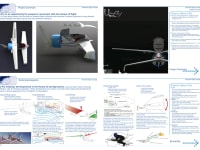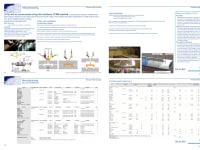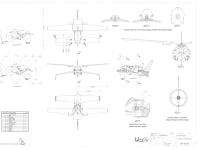U-Fly Personal Flight.
Flight has been the dream of man since he first looked upward at the freedom of the birds to move effortlessly through the heavens. These notions of flight as a personal experience have all but been extinguished by the deficiencies of the current aviation industry; this industry has developed into a mass transport system that defeats the tyranny of distance effectively, but ignores the changes that society has made and has not moved forward with society.
U-Fly is an opportunity for people to reconnect with the dream of flight. U-Fly is a simplified application of various aviation technologies targeted directly at getting more people to remember the wonder of flight they experienced as children. This is done by supplying the means to fly without long and complex physical training regimes or extended theoretical study. U-Fly uses ideas directly from the dawn of powered flight combined with advances in electric propulsion to bring forward personal freedom.
The Relevance.
The aviation industry, viewed as a mature industry, is experiencing a loss of respect in the eyes of the consumer. The industry is seen as old and uncompromising, lacking evolution and development. The aviation is not working to change this view and consequently it is viewed as a poor technological performer when compared to the communication and computer industries.
Timing.
Research has shown that environmental and social factors are consolidating to give urban dwellers reason to reconsider their transport options. High fuel costs, traffic congestion and localised pollution are forcing the consideration of alternatives at every level.
Alternate Sports.
The rise in personal fulfillment as a goal has seen an increase in the number of people participating in extreme sports. These activities are seen to provide a level of individual challenge in a world filled with conformity. Social status within the alternate sport community is only achieved through personal exertion. Hierarchy is determined by performance.
Alternative Power Sources.
Increased performance capability from electric engines and systems has begun to influence the types of vehicles becoming available to consumers. Automotive technology developments are pushing consumers and commentators to view electric and hybrid vehicles as a good option, economically and environmentally.
Flight Regime.
The needs of an aircraft flying at low speed and the characteristics of the flight envelope will require depth and breadth to ensure adequate safety margins in the design finalisation. The design must offer challenge and an obvious level of attainment to ensure the practitioners who have developed skills above the norm can be recognised.
Market.
Market research has shown that the product must provide a unique experience. Appealing to people who remember their childhood dreams of flight. he market will need to be approached in an unorthodox manner, using channels not usually associated with the sales and promotion of aviation products.
Costing.
The implementation plan allows for the development of 4 prototypes.
1 and 2 will be un-powered and used for tethered flight testing.
Production costs for prototype 4 will not be inclusive of training and certification.
Like this entry?
-
About the Entrant
- Name:Gary Redman
- Type of entry:individual
- Hardware used for this entry:Pen, Paper, Wind tunnel, WorkshopSoftware used for this entry:Solidworks, Photoshop, Cosmos Floworks, Illustrator
- Patent status:none








